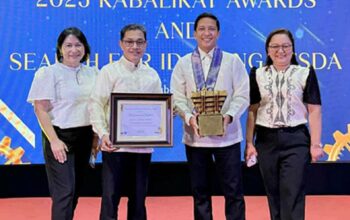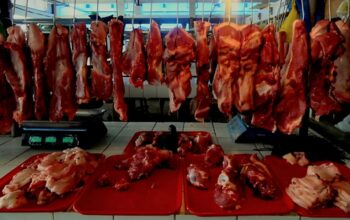THE Boholanos’ active participation in terms of environmental conservation and protection is key contribution to make Bohol province a qualified geopark in the long list of United Nations Educational, Scientific and Cultural Organization (UNESCO).
Resident geologist Karl Michael Din of the Bohol Environment Management Office (BEMO) pointed this out, saying “Boholanos’ embracing the label is vital to its bid to become the country’s first UNESCO Global Geopark.”
He was one of the resource persons in a recent Capitol Reports, a weekly media forum disseminating true and accurate information to counter the proliferation of fake news in the social media.
He said that community involvement in the said bid for a geopark is a strategy to protect and conserve important geological heritage sites and sustainable development for the locals and the visitors.
Environmentalists, tourism authorities, the government and other concerned agencies have pinpointed some of the geo-sites in Bohol to consider, like the world famous Chocolate Hills in Carmen, Batuan and Sagbayan towns); the Alicia Schist in Alicia town;, the Inabanga rupture site and Maribojoc uplifted marine terrace after the 2013 earthquake); cave pools and La Manok island in Anda town; Trinidad town’s cave system; Danajon Double Barrier Reefs that cover 10 towns in northern part; the Can-umantad Falls in Candijay town, among others.
It will be recalled that British ambassador to the Philippines Laure Beaufils, who visited Gov. Aris Aumentado wished Bohol well for its bid to become a geopark in the world after being told that the province has been nominated for the world geopark selection.
Beaufils, who came here with her family to savor Bohol’s hospitality, said that Bohol’s nomination to the world heritage is a “powerful, fantastic choice” during the press conference with few media personalities in Bohol held at the Amarela resort in premier tourist town of Panglao.
She said that in a tourist perspective if Bohol is chosen as one of the geoparks in the world it will make it a boost as tourist destination. The nomination as a geopark, if okayed by UNESCO, is like a tourist accreditation.
The British diplomat, along with Kristine Borja, head of political of British embassy in Manila, met with Gov. Aris Aumentado, provincial administrator Aster Caberte and Jovencia Ganub of the Bohol Environment and Management Office (BEMO).
The discussed a variety of subjects in an exploratory fashion that may contribute to Bohol development agenda under the current provincial administration.
The envoy told media that United Kingdom is very much concern on climate change, biodiversity, education, creatives and possible twinning.
Bohol is one of the seven (7) considered geoparks being nominated by the Global Geoparks Council of the UNESCO.
The other six are: Ijen, Indonesia; Maros Pangkep, Indonesia; Aras, Iran; Waitaki Whitestone, New Zealand; Kinabalu, Malaysia; and Khorat, Thailand. These sites are undergoing reevaluation and revalidation, the council said.
“The Council considered revalidation and extension proposals that had been submitted in 2019, 2020 and 2021, as the impact of the COVID-19 pandemic led to delays in the evaluation process,” the council said.
The council said that in coming up of seven (7) geoparks nominations, including Bohol, and endorsed it to its executive board for its separate endorsement during the 2023 spring session was an offshoot of the thorough examination in the presence of 73 observers and representatives of more them 20 member-states.
According to UNESCO, a “global Geoparks are single, unified geographical areas where sites and landscapes of international geological significance are managed with a holistic concept of protection, education, and sustainable development. They apply a bottom-up approach, combining conservation with sustainable development while involving local communities.”
The Council met in Satun, Thailand and online on September 4 and 5, 2022, to assess 9 new applications and 28 others for revalidations from current UNESCO Global Geoparks, all of which were submitted between 2019 and 2022. (rvo)



